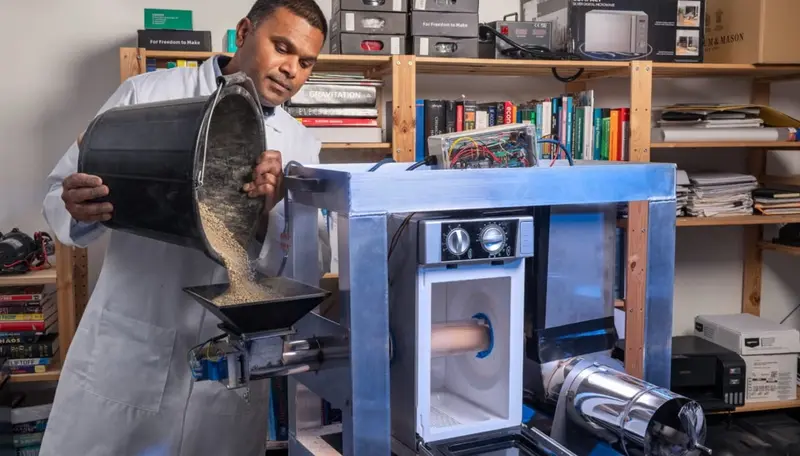Inventors from the technology company Naicker Scientific in Gloucestershire, England, have developed an advanced water purification system hidden beneath the surface of the Moon. This new technology will enable the production of clean drinking water for astronauts participating in long-term lunar missions.
For its invention, the company received the main prize of the international Aqualunar Challenge competition amounting to £150,000, the publication reported. Independent .
The scientists were inspired by an ordinary microwave.
The SonoChem technology is modeled after a kitchen. microwave oven The system uses microwaves and ultrasound to defrost and break down contaminants in water extracted from frozen soil. Month .
“Imagine you are digging in your garden in the middle of winter, trying to extract frozen water for drinking. Now imagine doing this in an environment with a temperature of -200 °C, almost in a perfect vacuum, with low gravity and very little electricity. This is what we will have to overcome on the Moon,” said Lolan Naicker, the lead author of the study and technical director of Naicker Scientific.
“If we can make the SonoChem system work there, we can make it work anywhere, whether on the glaciers of Mars or here on Earth, in regions where access to clean water is still challenging,” the researcher added.
Using powerful sound waves, the “moon microwave” creates millions of tiny bubbles in polluted water. The extreme temperature and pressure generated inside each microbubble produce unstable atoms with high chemical activity. This allows for the removal of pollutants.

The SonoChem system uses microwaves and ultrasound to purify water from the frozen soil of the Moon.
The scientific community highly appreciated the technology.
Thus, the invention won the international innovation competition Aqualunar Challenge with a prize fund of £1.2 million. This competition was organized by the space agencies of the United Kingdom and Canada, hoping to promote the development of innovative water purification technologies for lunar exploration.
Megan Christian, head of the judging panel for the Aqualunar Challenge, stated that the competition was created in response to the fact that NASA plans to establish a permanent manned base on the Moon by the end of this decade. “Astronauts will need a reliable supply of water for drinking and growing food, as well as oxygen for air and hydrogen for fuel,” she said.
Ms. Christian also reminded that “5.6 percent of the soil (known as regolith) around the Moon’s south pole is frozen water in the form of ice. According to her, if this water can be successfully extracted, separated from the soil, and purified, it will make a crewed base viable.”
